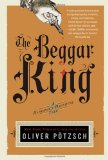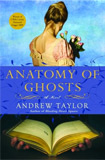Summary | Excerpt | Reviews | Beyond the book | Read-Alikes | Genres & Themes | Author Bio

C.J. Sansom's latest installment of the Matthew Shardlake series takes readers once again to the streets of Tudor England. In Revelation, hunchbacked Matthew Shardlake, lawyer and detective, has been called to represent mad Adam Kite, a young man who cannot stop praying. In this world of religious volatility, where Catholics and Protestants vie for superiority, religious conspicuousness is inadvisable. Young Kite's madness has gained too much attention, and he has been confined to the Bedlam, the keeping place for the insane in Tudor London. At the same time, a religious fanatic is on the loose, killing people around London. Matthew is drawn deep into the religious chaos threatening the peace of the city -- chaos that may or may not involve the disturbed Adam Kite.
Against this perfectly created historical backdrop, the hunchbacked Matthew Shardlake investigates the strange events surrounding the murders and Adam Kite. While the language and pacing of the novel reflect the slower way of life during the Tudor Age, the steady unraveling of the clues creates a gripping mystery, and the final chapters provide a superb and gratifying resolution.
If you are unfamiliar with Matthew Shardlake and his Sherlockian escapades, don’t feel that you must start at the beginning of the series to enjoy this story. Revelation is perfectly accessible as a stand-alone novel. Though Sansom doesn’t provide much of Matthew's personal history or how he's connected to the people in his employ, there's enough information for the reader to gain a foothold and dive into the plot -- and that's a great thing because the plot is nuanced, intelligent, and surprising.
Sansom's clever mystery is a perfect example of historical fiction, plunging the reader headfirst into the Tudor period. Every element -- dress, diction, setting, beliefs and behavior -- is rendered with historic accuracy. Interesting details, like facts about medical procedures, and the practice amongst the wealthy of wearing complete sets of other people's teeth, round out the reading experience. This novel is clearly well researched, yet the facts are never overplayed; the historical elements are woven seamlessly into the fabric of the narrative.
Many books have come out in recent years set during the Tudor period, most of which position the royal family and courtiers at the center of their narratives. In these novels, the middle and lower classes are merely part of the scenery. Revelation provides relief in its reversal of these themes and subjects. The royal family and the meddling courtiers play some role in the novel, but the primary characters live normal lives far from the drama at court, and their response to court life provides an interesting perspective. Readers familiar with the Tudor period as a time of opulence and romance will be fascinated by Sansom's other view, one that investigates the tumult and uncertainty of this early modern period.
For enthusiasts of mysteries or historical fiction, Revelation is a fascinating read and a welcome installment in this absorbing series.
![]() This review was originally published in The BookBrowse Review in February 2009, and has been updated for the
March 2010 edition.
Click here to go to this issue.
This review was originally published in The BookBrowse Review in February 2009, and has been updated for the
March 2010 edition.
Click here to go to this issue.

If you liked Revelation, try these:

by Oliver Potzsch
Published 2013
Chock-full of fascinating historical detail, The Beggar King brings to vibrant life another tremendous tale of an unlikely hangman and his tough-as-nails daughter, confirming Pötzsch's mettle as a storyteller at the height of his powers.

by Andrew Taylor
Published 2012
The Cartier Diamond Dagger winner and author of the quarter-of-a-million-copy bestseller, The American Boy, returns with a haunting tale reminiscent of Turn of the Screw.
Your guide toexceptional books
BookBrowse seeks out and recommends the best in contemporary fiction and nonfiction—books that not only engage and entertain but also deepen our understanding of ourselves and the world around us.